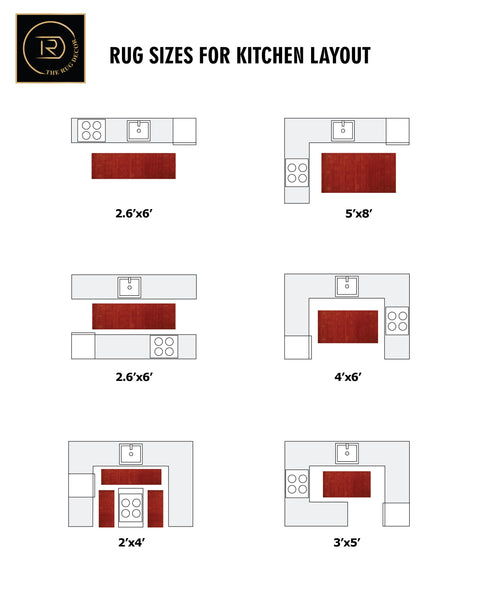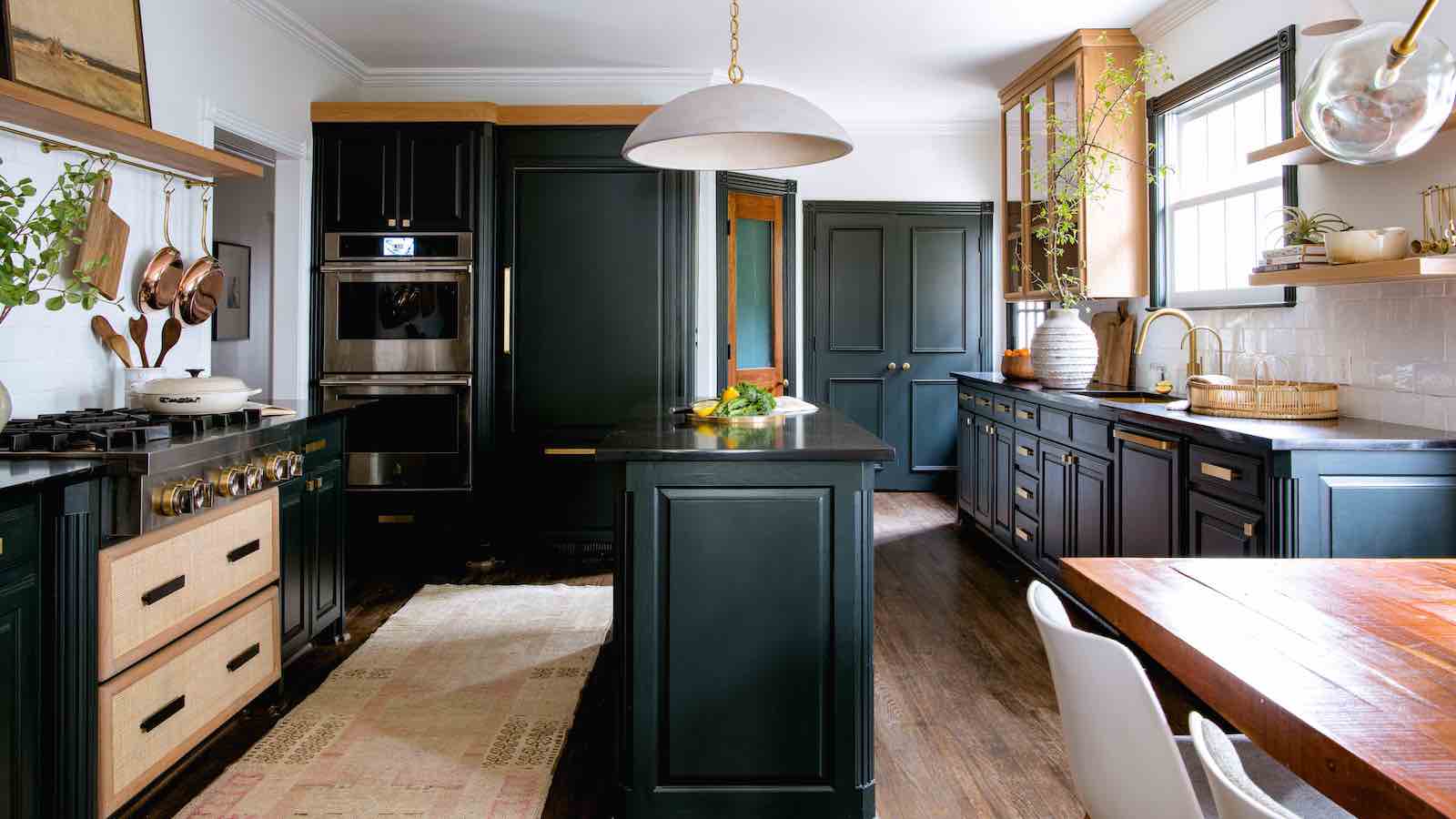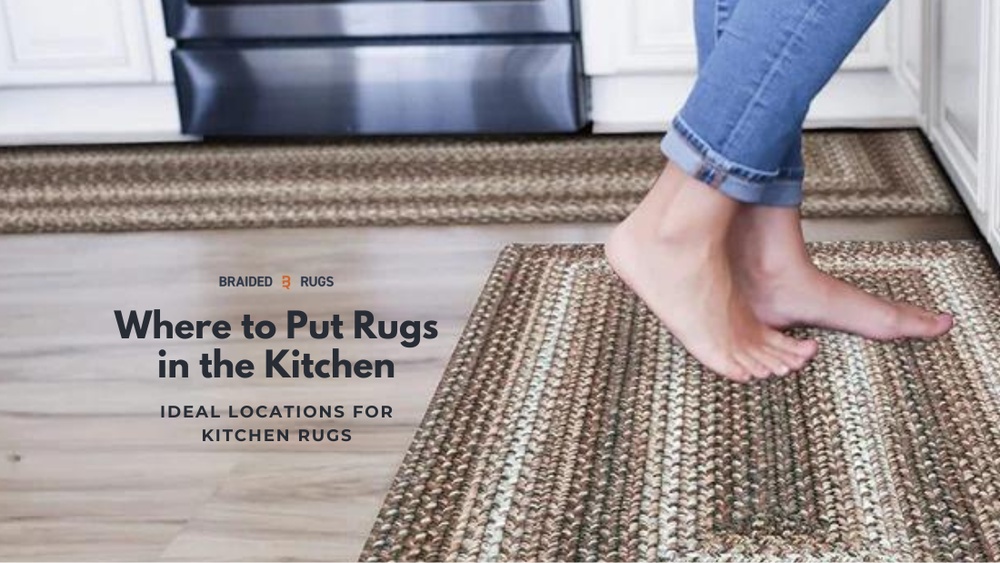Are you wondering where to put rugs in your kitchen to boost both comfort and style? Choosing the right spots for rugs can transform your kitchen into a cozy, inviting space while protecting your floors from spills and wear.
Whether you spend hours cooking at the stove or washing dishes at the sink, placing rugs in key areas can make a big difference in your daily routine. In this guide, you’ll discover the smartest rug placement ideas that suit any kitchen layout—from narrow galley kitchens to open-plan designs.
Keep reading to find out how to pick the perfect spots and rug sizes that bring warmth and function to your kitchen space.

Credit: www.tumbleliving.com
Key Rug Spots
Choosing the right spots for rugs in your kitchen adds comfort and style. Rugs protect floors from spills and wear. They also bring warmth to busy kitchen areas. Focus on places where you stand most. This makes cooking and cleaning easier on your feet.
Here are key rug spots to consider. Each spot serves a purpose and helps keep your kitchen cozy and safe.
In Front Of The Sink
Place a rug in front of the sink to soften standing time. It helps catch water spills and dish drips. This spot benefits from a soft, absorbent rug. It also adds a splash of color to the kitchen floor.
In Front Of The Stove
A rug in front of the stove offers comfort while cooking. It protects the floor from food spills and grease splatters. Choose a rug that is easy to clean and stays in place. This spot often needs durable, stain-resistant material.
Under The Kitchen Island
Rugs under the kitchen island define the space and add warmth. They create a cozy zone for meal prep or casual dining. Select a rug that fits well under the island’s shape and size. This spot can handle larger, decorative rugs.
Beneath The Dining Table
Place a large rug beneath the dining table to anchor the area. The rug should be big enough for chairs to stay on it when pulled out. This helps protect the floor from scratches and spills. It also adds softness and style to the dining space.
High-traffic Zones
Rugs in high-traffic zones add comfort and durability. Common paths include between the sink and refrigerator. These rugs protect floors from constant wear and tear. Use rugs with non-slip backing for safety in busy spots.
Choosing Rug Sizes
Choosing the right rug size is important for kitchen comfort and style. Rugs should fit the space without crowding it. The size depends on the kitchen layout and where you want to place the rug. Small kitchens may need narrow rugs, while open kitchens can handle larger area rugs. Proper sizing helps define zones and adds warmth to the kitchen floor.
Runner Rugs For Narrow Spaces
Runner rugs work well in narrow kitchens or hallways. These long, slim rugs fit along counters or aisles. They provide comfort while cooking or cleaning. Runners protect floors in tight spots without blocking doors or cabinets. Choose a length that covers the main walking path but leaves some floor visible at each end.
Area Rugs For Open Layouts
Open kitchens benefit from larger area rugs. These rugs anchor dining tables or kitchen islands. They create a cozy zone and add color or texture. Make sure the rug is big enough for chairs to stay on it when pulled out. This prevents tripping and keeps the space balanced. A rug that fits well makes the kitchen feel inviting.
Leaving Floor Borders
Leaving a border of visible floor around the rug is key. It stops the rug from looking crowded or out of place. A 6 to 12-inch floor border works well for most kitchens. This gap also helps keep the rug secure and reduces wear on edges. Floor borders create a neat, finished look and show off the kitchen’s flooring.
Style And Function Tips
Choosing the right rugs for your kitchen blends style with function. Rugs add warmth and comfort underfoot. They also protect floors from spills and wear. Picking the best spot and type ensures your kitchen looks good and stays safe.
Pairing Rugs For Cohesion
Select rugs that match your kitchen’s color scheme. Use similar tones or patterns to connect different areas. Place two smaller rugs in work zones to create balance. Keep size and shape in mind for smooth flow. This pairing creates a unified and stylish look.
Rug Materials And Maintenance
Choose rugs made from easy-to-clean materials like cotton or synthetic fibers. These dry quickly and resist stains. Avoid delicate fabrics that wear fast in busy kitchens. Regular vacuuming keeps rugs fresh and free of crumbs. Spot clean spills immediately to prevent stains.
Non-slip Backing Importance
Non-slip backing prevents rugs from sliding on kitchen floors. This backing adds safety, especially near sinks and stoves. Rugs without it can cause trips and falls. Use rug pads if your rug lacks a non-slip bottom. Safety is key in busy cooking spaces.

Credit: therugdecor.com
Rug Shapes And Kitchen Layouts
Choosing the right rug shape for your kitchen depends on the layout of the space. Rugs not only add style but also improve comfort during cooking and cleaning. Matching rug shapes with kitchen designs helps create a balanced and inviting area. Each rug type fits different kitchen zones and functions.
Round Rugs For Cozy Corners
Round rugs work well in small kitchen nooks or breakfast corners. Their shape softens sharp edges and creates a welcoming vibe. Place a round rug under a small table or near a reading chair to define that space. These rugs help separate cozy areas from the main kitchen flow.
Runners For Galley Kitchens
Long, narrow kitchens benefit from runner rugs. They fit perfectly between counters or along a walkway. Runners provide cushioning for tired feet and protect floors from spills. Choose runners with non-slip backing to keep them in place. This rug shape keeps the kitchen looking neat and organized.
Large Rugs For Dining Areas
Open kitchens with dining spaces suit large rugs. A big rug under the dining table anchors the area visually. It also adds warmth and comfort during meals. Make sure the rug extends enough so chairs stay on it when pulled out. Large rugs define the eating zone in a spacious kitchen.
Safety And Comfort
Safety and comfort are key reasons to add rugs in the kitchen. Rugs help keep the floor safe and reduce fatigue during long cooking sessions. Choosing the right spot for a rug can prevent accidents and make standing more pleasant.
Preventing Slips With Padding
Use rugs with non-slip backing to keep them from sliding. Place a rug pad underneath for extra grip. This reduces the risk of falls on wet or greasy floors. Always check that the rug lies flat without wrinkles. A secure rug keeps your kitchen safer for everyone.
Enhancing Comfort In Work Zones
Place rugs where you stand the most, like in front of the sink or stove. Soft rugs cushion your feet and reduce strain on joints. Comfort mats also work well but rugs add style and warmth. A comfortable kitchen makes cooking easier and more enjoyable.

Credit: www.homesandgardens.com
Frequently Asked Questions
Where Should You Put Rugs In Your Kitchen?
Place rugs in front of the sink, stove, and kitchen island for comfort and floor protection. Use runners in narrow spaces and larger rugs under dining tables. Ensure rugs have non-slip backing and leave flooring visible around edges for safety and style.
How To Style A Kitchen With Rugs?
Place rugs in high-traffic kitchen zones like in front of the sink, stove, or island. Use runners for narrow spaces and larger rugs under dining tables. Ensure rugs have non-slip backing and leave visible floor borders for style and safety.
Choose colors that complement your kitchen decor.
Where To Place Mats In A Kitchen?
Place mats in front of the sink, stove, and kitchen island for comfort and floor protection. Use runners in narrow areas and larger rugs under dining tables. Ensure rugs have non-slip backing and leave a visible floor border around edges for safety and style.
How To Place Rugs In An L-shaped Kitchen?
Place rugs in front of the sink and stove for comfort and spill absorption. Use a runner along narrow counters. Anchor the island area with a larger rug, leaving visible floor borders and securing rugs with non-slip backing.
Conclusion
Placing rugs in the kitchen adds comfort and protects floors well. Focus on busy spots like in front of the sink or stove. Use runners for narrow spaces and larger rugs near islands or dining areas. Always leave some floor visible around rugs for balance.
Secure rugs with non-slip pads to avoid slips. Simple placement can improve both style and function in your kitchen. Choose rugs that match your space size and layout. A well-placed rug makes cooking and cleaning more comfortable every day.

